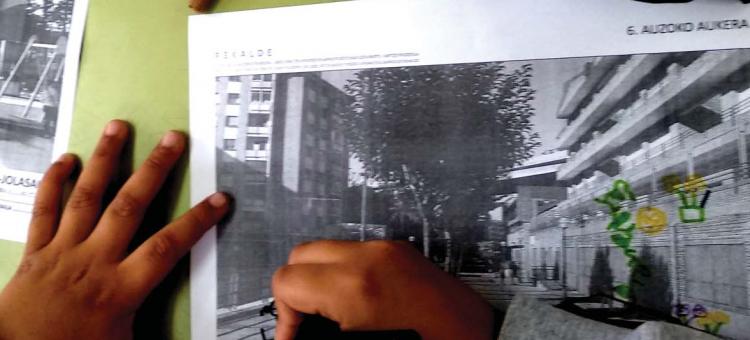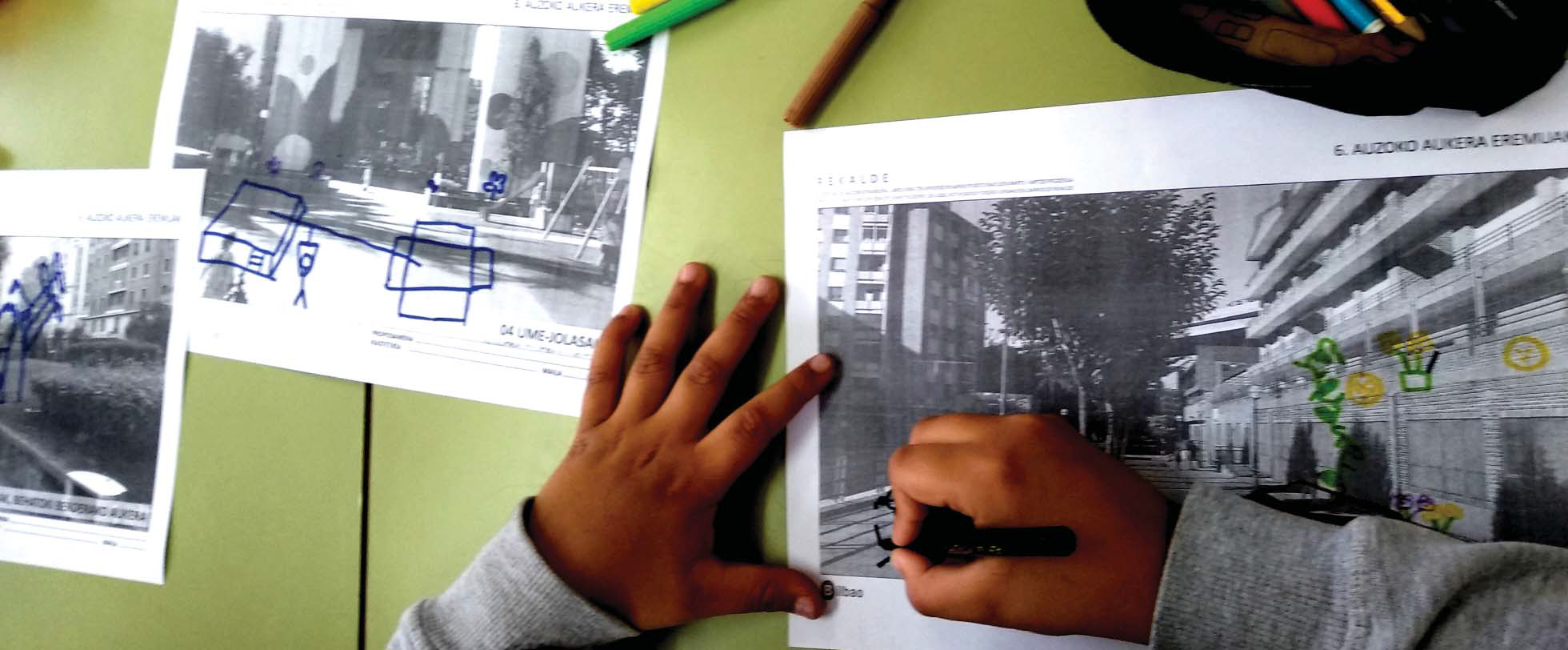
06
Rekalde

Project: PARTICIPATION PROCESS WITH STUDENTS FOR THE PROPOSAL OF USES AND ACTIVITIES IN REKALDE
Location: Rekalde (Basque Country, Spain)
Year| Duration: 2018
Clients: municipality of Bilbao
CONTEXT AND GOAL OF THE PROJECT
The Bilbao City Council, through different municipal areas, is beginning to involve its youngest citizens in the construction of the city.
In the specific case of the Rekalde neighborhood, the participatory process is part of the ¨Corazones del Barrio¨ project, which is why this process presents the opportunity to involve the nearby student community, in the uses, activities and urban design of the square and nearby spaces such as the school environment, sports areas, children's games and Plaza Gazteluondo, among others.
Regarding to girls, boys and teenagers who enjoy the square and those neighborhood spaces, what needs do they have? And opportunities?
This participation process aims to provide a different and complementary perspective to that of technical people and adult citizenship. Therefore, the specific objectives are:
1.- To include in the process the greatest diversity of students: between 5 and 15 years old.
2.- To Analyse the needs of urban spaces in the neighborhood.
3.- To get to know better the neighborhood, its squares and the spaces near them, as well as examples of other places.
4.- Propose new uses and activities and urban design solutions.
OUR APPROACH
The process starts from a common challenge: the improvement of the Rekalde neighborhood. This challenge is articulated by four main axes: 1- uses and activities, 2- urban facilities and furniture, 3- landscape, 4- safe and sustainable mobility.
METHODOLOGY
Three sessions were held with each group of participating students, following this 4 steps:
• Information, needs and opportunities. Present the process (what, for what, who, how), show examples from other places and discuss needs and opportunities; the uses and activities that occur in the neighborhood and which ones don’t, but would like to occur.
• Visit to the neighborhood. To understand better the neighborhood and review the needs and opportunities identified in the previous session.
• Drawn proposals of urban furniture and facilities, landscape and mobility, that improve the neighborhood and that respond to the needs and opportunities previously identified. Collaboratively and consensually carried out.
• Explanation and sharing of these proposals with the other participants.
RESULTS
With the common challenge of collecting contributions for the improvement of the neighborhood, 1080 contributions were collected in total from the different work groups of each participating participatory center. The most outstanding proposals for the different areas were: The reorganization of the sports spaces, the creation of murals on the highway pillars, more lighting, high slides and cover for the games area, trees, reorganization of benches ...

